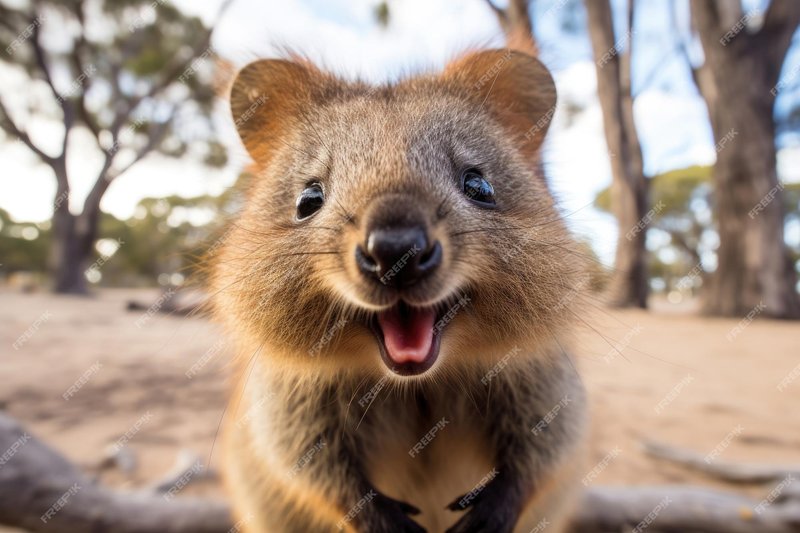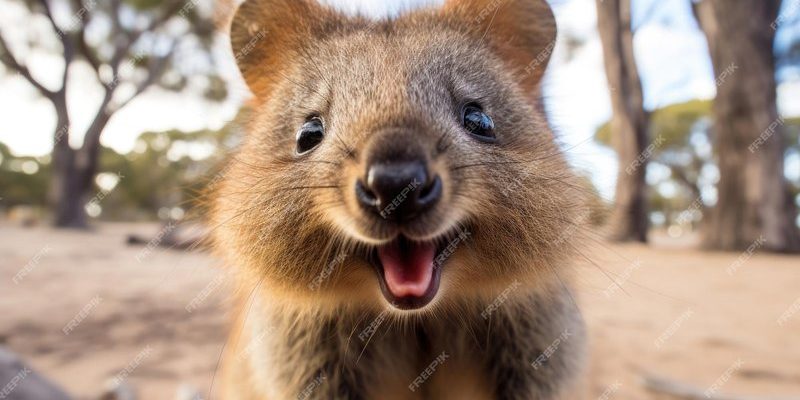
Imagine sitting in a café talking about wildlife while sipping your coffee. You might say, “I wonder what quokkas actually munch on?” You’re not alone in this curiosity! Quokkas primarily inhabit Australia, particularly on Rottnest Island. Their diet includes a variety of plants and leaves, but there’s a bit more to it than just grazing on grass. Let’s explore how they find their food and what strategies they use to survive in their environment.
Understanding Quokka Diet
Quokkas are herbivores, which means their diet consists solely of plant material. Their day-to-day menu might surprise you. Unlike some animals that only eat certain types of food, quokkas enjoy a diverse range of vegetation. This includes:
- Grasses
- Leaves
- Fruits
- Flowers
You might be wondering how they manage to sustain themselves with these options. Quokkas have sharp incisors that help them nibble on tough plant material. They tend to feed during the cooler hours of the day, often in the morning and late afternoon, to avoid the heat. Honestly, that’s a smart move! Staying hydrated is also crucial for them, especially since they consume moisture-rich foods.
Feeding Habits and Preferences
When it comes to food preferences, quokkas are quite choosy. They have a knack for selecting nutrient-dense plants, which is important for their survival. It’s like being at a buffet—why settle for plain salad when you can have a fresh fruit platter? Quokkas often choose younger leaves, which are softer and more nutritious.
Their favorite foods include native plants found on Rottnest Island, such as spinifex and various flowering shrubs. Interestingly, they’ve adapted to their environment and have learned to thrive on whatever is available, demonstrating remarkable flexibility.
But here’s the thing: changes in their habitat can impact their diet. For example, if human activity alters their environment, it could limit the food sources they rely on. Quokkas are true survivors, but they need a healthy habitat to thrive.
Sensing Food Sources
Quokkas have an acute sense of smell that helps them locate food. Think of it like how you might smell freshly baked cookies from a distance and follow your nose. They can sniff out the most delicious plants, even in dense vegetation.
Their keen eyesight also plays a role in their feeding habits. Quokkas can spot food from afar, which is essential for identifying both potential meals and any threats nearby. By being observant, they maximize their foraging efficiency. Imagine being in a crowded café, trying to spot a friend—you need your eyes and ears to find the right person, right?
Foraging Strategies
Foraging is an art form for quokkas. They employ a combination of strategies to find food effectively. One common method is browsing, where they move slowly through their environment, munching on whatever plant catches their fancy. This leisurely approach allows them to fully enjoy their meal, and they often return to their favorite spots.
Additionally, quokkas sometimes engage in grazing. This involves consuming more ground-level vegetation quickly, especially when they’re in a hurry. It’s similar to how you might grab a quick snack when you’re running late.
Their foraging techniques highlight their adaptability. While some animals might have a strict meal routine, quokkas can switch things up based on what’s available, ensuring they get enough to eat regardless of changing conditions.
Social Feeding Behavior
Quokkas are social creatures, and this extends to how they feed. They often forage in groups, which can provide safety in numbers. Picture a group of friends sharing a pizza—you’re more likely to enjoy it together than alone!
Feeding in groups allows quokkas to keep an eye out for predators while they munch away. If one quokka senses danger, they can alert the others, ensuring their safety. Cooperative feeding not only helps them find food but also strengthens their social bonds. It’s a win-win situation!
Adapting to Seasonal Changes
As seasons change, so does the availability of food for quokkas. During the wetter months, they have access to a variety of fresh vegetation. However, in the drier months, they may have to adjust their diet more dramatically.
Quokkas show impressive adaptability; they’ll seek out drought-resistant plants and might even rely on stored fat reserves. This ability to change their habits ensures they can survive even when conditions aren’t ideal. It’s a reminder for us, too—adapting to change is key to thriving in different environments.
In summary, quokkas are fascinating little animals with unique diet and hunting strategies. From their selective feeding habits to their ability to adapt to seasonal changes, they’re a fantastic example of survival in the wild. Understanding these creatures helps us appreciate the delicate balance of ecosystems and the importance of conservation.
So, next time you think about quokkas, remember that their day-to-day lives are a mix of strategy, adaptability, and community. It’s not just about being cute; it’s about thriving in an environment that often demands so much of them. As we continue to learn more about these charming marsupials, let’s also consider how we can help protect their habitats, ensuring they have a bright future ahead.

